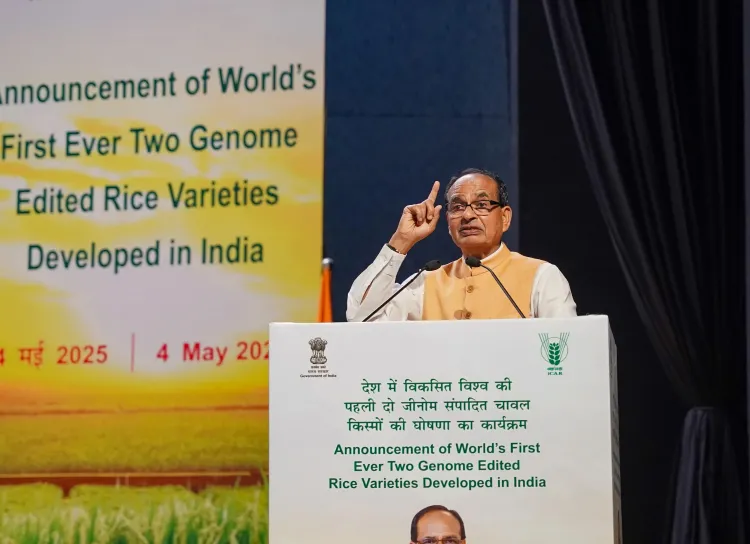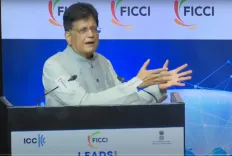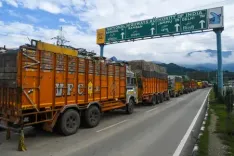Is India the First Nation to Develop Genome-Edited Rice Varieties?

Synopsis
Key Takeaways
- India is the first country to develop genome-edited rice varieties.
- New varieties are DRR Rice 100 (Kamla) and Pusa DST Rice 1.
- Utilizes CRISPR-Cas technology for precise genetic modifications.
- Aims to enhance production and address environmental impacts.
- Emphasizes the importance of modern agricultural techniques.
New Delhi, May 4 (NationPress) Union Agriculture Minister Shivraj Singh Chouhan announced on Sunday the creation of two genome-edited rice varieties in India, making it the first nation globally to achieve this milestone.
This development signifies a pivotal advancement in scientific research and innovation. The introduction of these crops will not only enhance agricultural output but also bring about beneficial environmental impacts. It aims to conserve irrigation water and reduce greenhouse gas emissions, consequently alleviating environmental pressure.
While addressing an audience at the event, Chouhan stated that under Prime Minister Narendra Modi's leadership, “India’s vision for a developed nation is being realized, and farmers are progressing towards prosperity. Today’s achievement will be inscribed in golden letters.”
“During the ‘Azadi Ka Amrit Mahotsav’, PM Modi urged farmers to embrace modern methods to tackle agricultural challenges. Motivated by his vision, ICAR scientists have achieved remarkable progress in agriculture through these new crop varieties,” the minister remarked.
Chouhan highlighted the urgent need to ensure food security, enhance nutritious production, and supply food for both India and the world, aspiring to position India as the global food basket.
He mentioned, “We take pride that our initiatives have led to the export of Basmati rice worth 48,000 crore annually.”
The minister also emphasized the necessity to boost production of soybean, arhar, tur, lentils, urad, oilseeds, and pulses.
Chouhan introduced the “Minus 5 and Plus 10” strategy, which proposes reducing the rice cultivation area by 5 million hectares while increasing rice yield by 10 million tons within the same area, thereby allowing space for pulses and oilseeds cultivation.
He encouraged farmers, particularly the youth, to adopt cutting-edge agricultural techniques. Chouhan asserted, “We need to bring agricultural research to the farmers. When agricultural scientists collaborate with farmers, extraordinary outcomes will occur.”
ICAR has successfully developed India’s pioneering genome-edited rice varieties – DRR Rice 100 (Kamla) and Pusa DST Rice 1. These varieties promise to revolutionize agricultural practices through improved production, climate resilience, and water conservation.
These new crops were developed utilizing genome-editing technology based on CRISPR-Cas, which enables precise modifications in the organism's genetic material without integrating foreign DNA.








